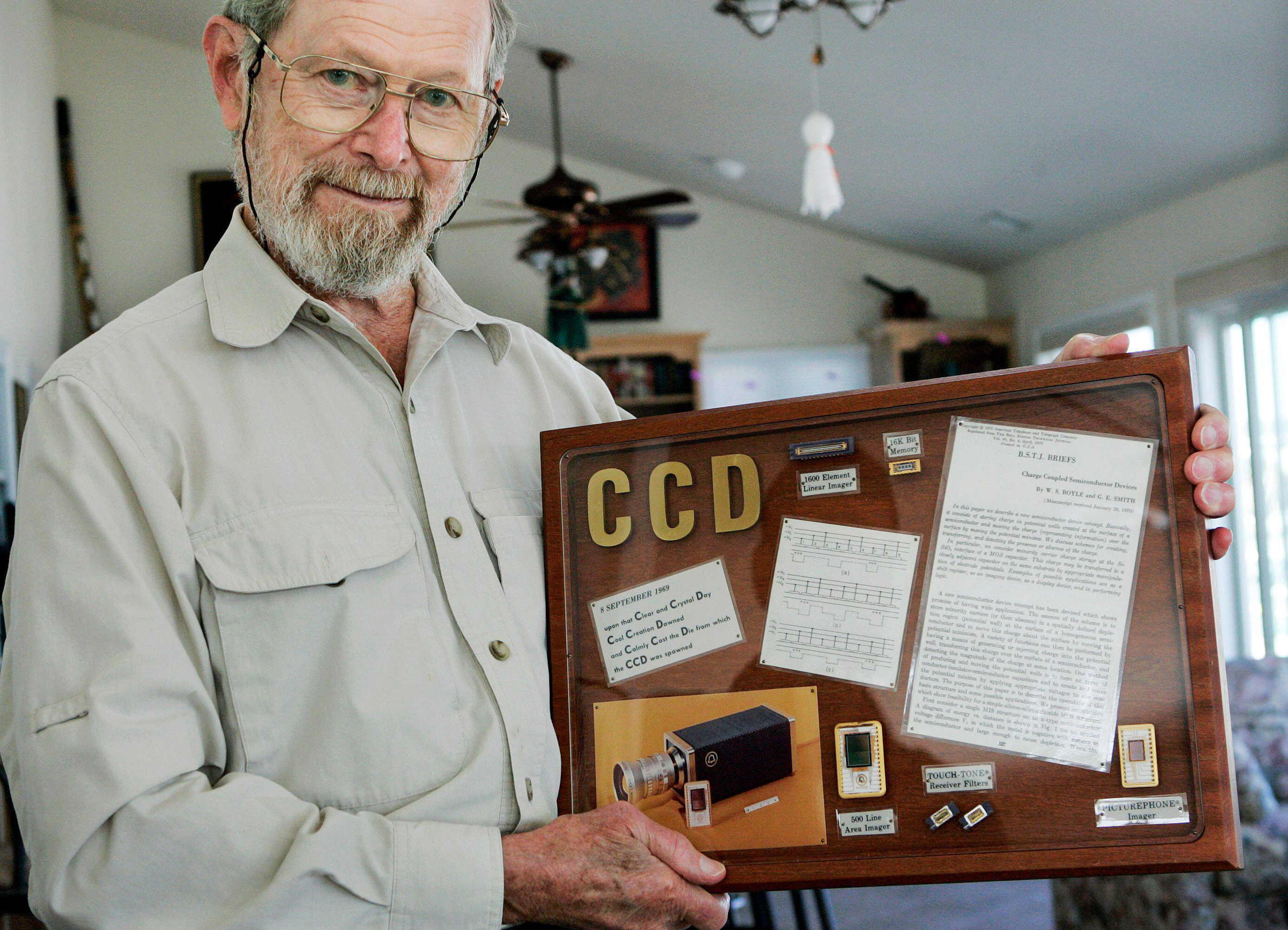
George E Smith helped invent a device that changed everything from photography to astronomy: the CCD sensor. Smith, co-inventer of the CCD sensor, Nobel Prize winner, National Inventors Hall of Fame inductee and US Navy veteran has died aged 95.
Smith passed away at his home in New Jersey on May 28, according to The New York Times.
Together with Willard S Boyle, Smith invented the charge-coupled device, or CCD sensor, while working at Bell Labs in 1969. The two inventors were working on improving video telephone technology and had set out to create a new semiconductor memory chip for computers.
The two inventors were inspired by Einstein’s photoelectric effect, the term for how light can eject electrons when hitting a metal surface. Smith and Boyle theorized that the current created from this photoelectric effect could be stored by using rows of small capacitors.
The initial sketch for the concept only took the duo about an hour, according to the National Inventors’ Hall of Fame, while the idea was first published in 1970 and later patented in 1974.
The CCD later became the basis for the first digital camera when Kodak inventor, Steve Sasson was asked by his supervisor, Gareth Lloyd, to investigate if the CCD could be used for an image sensor on a camera.
Michael F. Thompsett, who also worked at Bell Laboratories, is often also credited with demonstrating the potential of a CCD for imaging rather than memory storage and filed a patent for the idea in 1972.

CCD sensors were quickly used in a variety of fields outside photography, including astronomy research, medical imaging, and broadcast.
“I was once thanked by a young astronomer for originating the device that created an avalanche of new data and made creating an original thesis project much, much easier,” Smith recalled during his acceptance speech of the Nobel Prize.
“I have also been thanked by mobile TV cameraman for the big reduction in weight of their load.”
In modern cameras, the CCD has largely been replaced by CMOS. But Smith seemed to support the advancement of what was once created as a memory chip. “No device is ever perfect, nor is photographic film,” he said during his Noble Prize acceptance.
Smith and Boyle accepted the Nobel Prize in Physics in 2009 for the invention of the CCD sensor, a prize that was split with the development of fiber optic cables.
Smith first started with Bell Laboratories after finishing a degree in physics from the University of Chicago, following four years serving in the US Navy. Smith remained at Bell Laboratories until he retired in 1986, filing 30 patents over the course of his career. After retirement, he spent 17 years traveling abroad in his sailboat.
You may also like…
Find out more about the history of photography or dive into the magic of CCD sensors.







